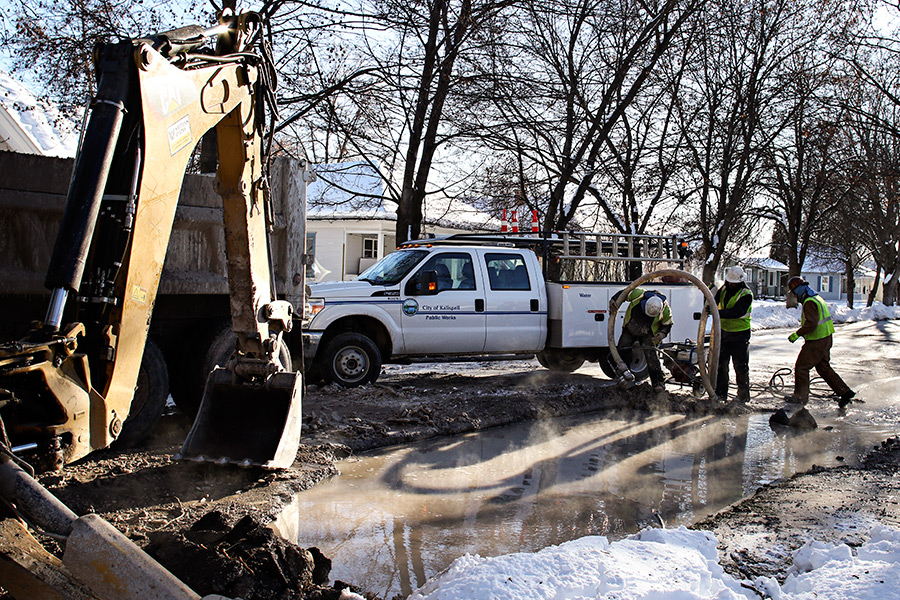Since the beginning of January, the City of Kalispell has responded to three broken water mains and one leak. Officials say the breaks – two of which flooded parts of Second and Fourth avenues on subsequent days in January – are due to the ground moving as it freezes and thaws. Whitefish had a similar break last week, which forced city officials to issue a temporary advisory for residents to boil their water.
While winter’s cold temperatures often lead to trouble for municipal water systems, officials say the aging underground infrastructure is also part of the problem.
“The old cast iron water main has served the community well,” said Kalispell Public Works Director Susie Turner. “But these pipes have been in the ground for a long time.”
In some areas, the pipes have been in use since the 1920s, when they replaced the city’s previous wooden water pipes. And Kalispell is not unique.
According to Darryl James, executive director of the Montana Infrastructure Coalition, communities across Montana are grappling with aging water systems.
“A lot of community water and sewage systems were installed 75 to 100 years ago and a lot of that equipment is starting to reach the end of its useful life,” James said.
According to the Montana Chapter of the American Society of Civil Engineers, the state has more than 5,300 miles of water distribution and transmission piping, enough to make a trip from Billings to Miami and back. In Kalispell, 149 miles of water main runs under its streets. A 2011 study by the Montana Department of Environmental Quality found that the state’s water systems needed more than $885 million worth of upgrades because of age, capacity demands or new regulation requirements. Kalispell’s water system needs more than $25 million worth of repairs and upgrades, Turner said, but that work cannot happen all at once.
The 2014 report card from the American Society of Civil Engineers states that at current spending levels it would take 90 years to replace and repair Montana’s water infrastructure.
Turner said that the oldest water main pipes in Kalispell are within the downtown area, home to some of the community’s earliest development. The further out the water mains extend, the more modern the material used to construct them. Most contemporary pipes are built using a strong polyvinyl chloride (PVC) material.
Kalispell public works employees respond to anywhere from five to 10 water main breaks annually. Turner said the number of breaks usually depends on weather and if there are sudden and extreme fluctuations in temperature. Emergency repairs to a broken pipe can cost upwards of $3,000, depending on the break. Some breaks are the result of ground movement whereas others are the result of corrosion over time.
A spreadsheet on Turner’s computer lists the many water main projects she hopes the department can tackle in the coming years. One of the biggest for 2017 will be replacing the water main underneath Fourth Avenue East from Center Street to 14th Street. That project is expected to cost about $4 million.
But James with the infrastructure coalition said funding those projects is difficult, especially with the sunset of the Treasure State Endowment Program, a state-run program that offered matching grants to cover vital infrastructure projects. While Kalispell Rep. Frank Garner sponsored a gas tax increase to help alleviate the state’s infrastructure issues, that money would go exclusively to roads and bridges. James said one bright spot in the Legislature is a local option sales tax bill that, if approved, would allow more communities to implement resort taxes to pay for local projects.
